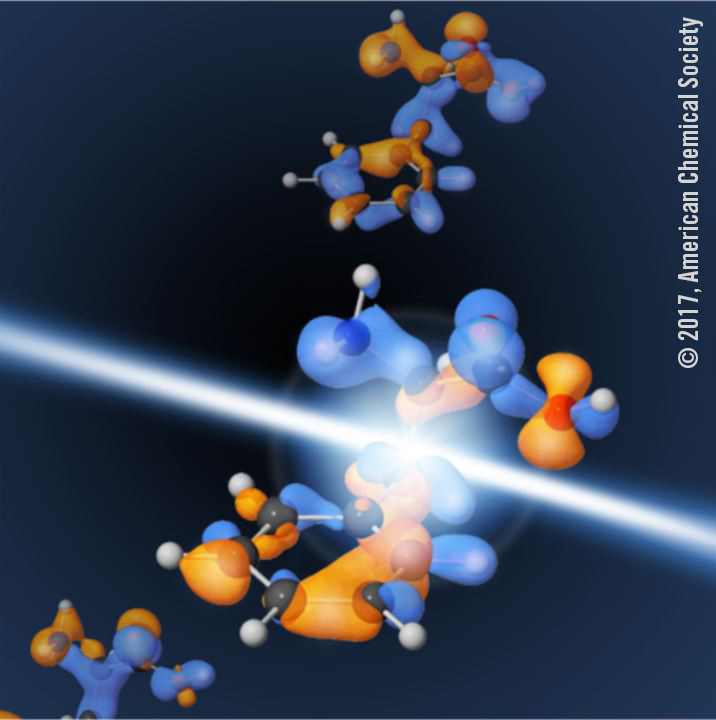Ultrafast photonics for the design of new materials and efficient energy capture
15.07.2019
 |
|
Adapted from Chem. Rev. 117, 10760. DOI: 10.1021/acs.chemrev.6b00453. © 2017, American Chemical Society. |
The FULMATEN-CM project aims to combine the technique of ultrafast laser spectroscopy in the charge transfer study of solar cells with the objective of improving its efficiency and applying it to the manufacturing of photovoltaic materials.
Two years ago, in 2017, Spanish and Italian researchers (led by Fernando Martín and Mauro Nisoli) set down the foundations of attochemistry, a discipline that studies the movement of electrons during a chemical reaction by attosecond light pulses (10-18 seconds, the shortest time interval ever measured). Among the potential applications of this discipline is the improvement of photovoltaic cells, sources of clean and renewable energy, vital to combat climate change.
The FULMATEN-CM Synergic Project, funded by the Regional Government of Comunidad de Madrid, has been designed around two nodes, led by Fernando Martín (Modeling Group, Madrid Institute for Advanced Studies in Nanoscience (IMDEA Nanociencia) and Autónoma University of Madrid (UAM)) and Luis Bañares (Group of the Femtochemical Reaction, Faculty of Chemistry of the Complutense University of Madrid, UCM). The first will provide his pioneering experience in the development of theoretical methods for the study of excitation and ionization, key processes in chemical reactions. These methods will be transferred from theory to experimentation in the laboratory of the UCM, whose renowned experience in pulsed femtosecond lasers will allow it to set up in Madrid the first device capable of registering processes in attoseconds and detecting the transition states of the reactions to study. Back to IMDEA Nanociencia, the Nanophotonics Laboratory will contribute with its experience in the advanced characterization of opto-electronic materials and devices, to the application of the results in the photovoltaic cells to try to improve its energy efficiency (currently less than 20%). Research groups from the Faculty of Sciences UAM, the University of Salamanca, the University of Lyon, the Polytechnic Institute of Milan (Mauro Nisoli) and the companies OPVIUS GmbH, FastLite, Lasing and SIMUNE will contribute with their experience in the FULMATEN-CM project.
By the end of the 3-year project, it is expected that Comunidad de Madrid will be at the level of countries such as Germany, the United Kingdom and the United States in terms of the ability to visualize processes at attosecond scales in condensed phase systems. If we add to this the ability of FULMATEN-CM for the production of theoretical models and computer codes, for which we have RES (the Spanish Supercomputing Network) and PRACE (European Supercomputing Network), the objective of obtaining a level of understanding of the charge transfer that occur in the conversion of light energy into electrical energy and that will allow the optimization of photovoltaic cells, seems close.
Parallel to the scientific tasks, a programme of activities is also executed. The programme strategy is based on the training and attraction of researchers, for which there is approximately €830,000 of funding from the Synergic Programme 2018 from Consejería de Educación e Investigación from the Regional Government of Comunidad de Madrid to IMDEA Nanociencia and the Complutense University of Madrid.

Source: IMDEA Nanociencia




